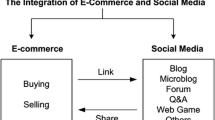Abstract
To effectively reduce cost of e-government construction, operation and maintenance, and solve problems of using different standards, redundant construction, and decentralized resources in e-government construction, most local governments adopt cloud services to achieve non-confidential electronics under the guidance of national policies. However, how to improve the user satisfaction of e-government cloud services has become a pressing issue faced by government cloud authorities. Based on the literature review, the current research constructs a hypothetical model of influencing factors of the user satisfaction of e-government cloud services. It summarizes the factors into service quality, service price, and service trust. Taking the e-government cloud services in Weifang, Shandong, as a research object, this paper conducts an empirical study based on a survey. The results show that service quality and service trust positively affect the user satisfaction of e-government cloud services. However, service price dampens the user satisfaction of e-government cloud services. More importantly, service price partially mediates the relation between service quality and user satisfaction of e-government cloud services. The results guide for the e-government cloud authorities to improve user satisfaction, and inspire the marketing of e-government cloud services.

Similar content being viewed by others
References
Mosa, A., El-Bakry, H. M., El-Razek, S. M. A., & Hasan, S. Q. (2016). A proposed E-Government framework based on cloud service architecture. International Journal of Electronics and Information Engineering, 5(2), 93–104. https://doi.org/10.6636/IJEIE.201612.5(2).05
Hu, H. H., Kandampully, J., & Juwaheer, T. D. (2009). Relationships and impacts of service quality, perceived value, customer satisfaction, and image: An empirical study. The Service Industries Journal, 29(2), 111–125. https://doi.org/10.1080/02642060802292932
Liang, Y., Qi, G., Wei, K., & Chen, J. (2017). Exploring the determinant and influence mechanism of E-Government Cloud Adoption In Government Agencies in China. Government Information Quarterly, 34(3), 481–495. https://doi.org/10.1016/j.giq.2017.06.002
Lee, J., Kim, H. J., & Ahn, M. J. (2011). The willing of e-government service adoption by business users: The role of offline service quality and trust in technology. Government Information Quarterly, 28(2), 222–230. https://doi.org/10.1016/j.giq.2010.07.007
Hung, S. Y., Chang, C. M., & Yu, T. J. (2006). Determinants of user acceptance of the E-Government services: The case of online tax filing and payment system. Government Information Quarterly, 23(1), 97–122. https://doi.org/10.1016/j.giq.2005.11.005
Wang, S. G., Liu, Z. P., Sun, Q. B., Zou, H., & Yang, F. C. (2014). Towards an accurate evaluation of quality of cloud service in service-oriented cloud computing. Journal of Intelligent Manufacturing, 25(2), 283–291. https://doi.org/10.1007/s10845-012-0661-6
Zhang, L., Luo, Y. L., Tao, F., Li, B. H., Ren, L., Zhang, X. S., Guo, H., Cheng, Y., Hu, A., & Liu, Y. K. (2014). Cloud manufacturing: A new manufacturing paradigm. Enterprise Information Systems, 8(2), 167–187. https://doi.org/10.1080/17517575.2012.683812
Goel, R. (2015). Trusted supply chains: Surveying competitive value of the cloud. International Journal of Management & Information Systems, 19(1), 43–50. https://doi.org/10.19030/ijmis.v19i1.9087
Shin, D. H. (2013). User centric cloud service model in public sectors: Policy implications of cloud services. Government Information Quarterly, 30(2), 194–203. https://doi.org/10.1016/j.giq.2012.06.012
Marston, S., Li, Z., Bandyopadhyay, S., Zhang, J. H., & Ghalsasi, A. (2011). Cloud computing—The business perspective. Decision Support Systems, 51(1), 176–189. https://doi.org/10.1016/j.dss.2010.12.006
Grönroos, C. (1994). From scientific management to service management: A management perspective for the age of service competition. International Journal of Service Industry Management, 5(1), 5–20. https://doi.org/10.1108/09564239410051885
Wang, H. Y., He, W., & Wang, F. K. (2012). Enterprise cloud service architectures. Information Technology and Management, 13(4), 445–454. https://doi.org/10.1007/s10799-012-0139-4
Na, Q., Yin, G. S., & Liu, A. (2019). A novel heuristic artificial neural network model for urban computing. IEEE Access, 7, 183751–183760
Ren, L., Zhang, L., Tao, F., Zhao, C., Chai, X. D., & Zhao, X. P. (2013). Cloud manufacturing: From concept to practice. Enterprise Information Systems, 9(2), 186–209. https://doi.org/10.1080/17517575.2013.839055
Shin, D. (2015). Beyond user experience of cloud service: Implication for value sensitive approach. Telematics and Informatics, 32(1), 33–44. https://doi.org/10.1016/j.tele.2014.02.002
Cooley, A. (2018). Examining development of E-Government in Russia and China: A comparative approach. International Journal of Public Administration, 41(11), 899–908. https://doi.org/10.1080/01900692.2017.1300915
Liang, Y., & Qi, G. (2017). The determinants of E-Government cloud adoption: Multi-Case analysis of China. International Journal of Networking and Virtual Organizations, 17(23), 184–201
Homburg, C., Hoyer, W. D., & Koschate, N. (2005). Customers’ reactions to price increases: Do customer satisfaction and perceived motive fairness matter? Journal of the Academy of Marketing Science, 33(1), 36–49. https://doi.org/10.1177/0092070304269953
Li, M., Zhao, D., & Yu, Y. (2015). TOE drivers for cloud transformation: Direct or trust-mediated. Asia Pacific Journal of Marketing and Logistics, 27(2), 226–248. https://doi.org/10.1108/APJML-03-2014-0040
Schoorman, F. D., Mayer, R. C., & Davis, J. H. (2007). An integrative model of organizational trust: Past, present, and future. Academy of Management Review, 32(2), 344–354. https://doi.org/10.5465/amr.2007.24348410
Acknowledgements
This work was supported by the [National Natural Science Foundation of China] under Grant [Number 71704020]; [Natural Science Foundation of Heilongjiang] under Grant [Number QC2017081]; [Key R & D project of Shandong Province] under Grant [Number 2018GSF122001]; and [National Key R&D Program of China] under Grant [Number 2017YFF0207702].
Author information
Authors and Affiliations
Corresponding author
Additional information
Publisher's Note
Springer Nature remains neutral with regard to jurisdictional claims in published maps and institutional affiliations.
Rights and permissions
About this article
Cite this article
Li, G., Zhou, M., Feng, Z. et al. Research on Key Influencing Factors of E-Government Cloud Service Satisfaction. Wireless Pers Commun 127, 1117–1135 (2022). https://doi.org/10.1007/s11277-021-08567-0
Accepted:
Published:
Issue Date:
DOI: https://doi.org/10.1007/s11277-021-08567-0




